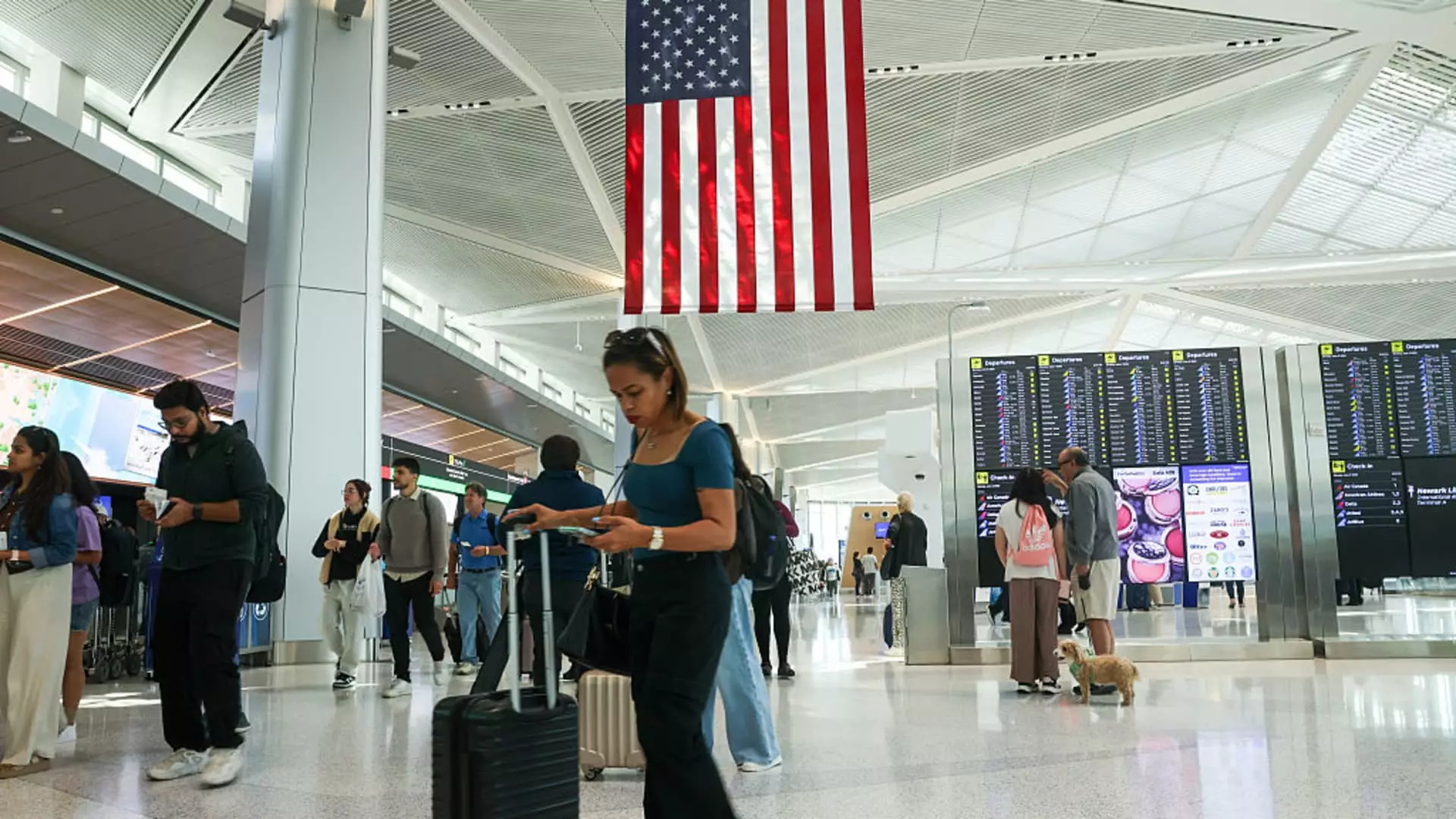For years, the airline industry has cultivated an image of relentless growth, soaring profits, and unrestrained expansion. However, beneath this glossy veneer lies a stark reality that most industry insiders seem reluctant to confront: a sector battling multiple headwinds that threaten to undermine its long-term viability. While millions anticipate holiday travel this summer, the broader economic and consumer landscape suggests that the much-lauded recovery is more fragile than it appears. The recent decline in domestic fares—now averaging around $265 for a round-trip—has signaled an “on sale” mentality, but that is precisely the problem: pricing discounts fundamentally reflect desperation rather than robust demand.
The airline industry’s revenue generation is primarily concentrated in the second and third quarters, yet even these critical periods are showing signs of strain. Airlines are cutting unprofitable routes and trimming capacity—measures that underscore a recognition that the market is not as eager or lucrative as it once was. The shift in consumer behavior, influenced by economic uncertainty, inflation, and a shrinking pool of international tourists, complicates the outlook. These firms are caught in a cycle where competitive pressure forces them to lower fares just as they confront austerity pressures from investors eager for profitability, not just volume.
The Breach in the Earnings Fortress
The global economic backdrop remains precarious, with tariffs, policy oscillations, and fluctuating international visitor numbers adding to the uncertainty. Major carriers like Delta, American, and Alaska Airlines have been notably reticent in providing optimistic forecasts for 2025, a stark contrast to the free-spending euphoria that once propelled the industry. The reluctance to make concrete projections reveals an acknowledgment of an arduous road ahead—one marked by reduced travel demand and unpredictable economic tides.
Even as TSA expects over 18 million travelers within a week—an impressive figure—this surge hardly signifies a return to pre-pandemic norms. The near record-setting June 22 checkpoint count hints at pent-up demand, but that demand appears insufficient for sustained profitability. Airlines, having historically relied on the holiday season’s windfall, are now preparing for the inevitable: leaner seasons post-summer, with capacity reductions, route eliminations, and a focus on trimming costs. This strategic retreat is driven not by optimism but by necessity, as the financial health of the industry remains precarious amidst declining revenues and inflated operating costs.
Demand—A Shaky Foundation
Despite a resilient labor market, with strong job data inflating expectations, the actual behavior of travelers paints a different picture. Consumer spending on air travel has fallen sharply—down nearly 12% in June alone. These statistics reflect a broader trend of hesitancy, where economic uncertainty weighs heavier than employment figures suggest. The decline in airline ticket prices, international and domestic alike, signals an industry desperation to fill seats rather than a healthy impulse to travel. This discounting might temporarily boost passenger counts but undermines profit margins long-term.
International travel, once a bright spot, is no longer a guaranteed moneymaker. While international outbound flights are up modestly from last summer, fares have softened considerably. Europe, typically a lucrative destination, now sees average fares matching 2019 levels—an indication that even foreign markets are not immune to the cost-conscious consumer shift. Asia, often seen as a growth frontier, has seen prices fall sharply, further diminishing the revenue streams for major carriers.
The Core Conflict: Survival Versus Expansion
In such a volatile environment, airlines are caught between the desire to maintain market share and the harsh economic realities forcing them to cut costs. While some may argue that lower fares and capacity adjustments reflect adaptability, these measures also reveal vulnerabilities. The industry’s addiction to growth during the pandemic’s initial rebound has left it overexposed, with too many flights chasing too few passengers.
The question is whether the current strategy is sustainable or merely a temporary bandage over deeper flaws. Airlines that continuously resort to fare wars and capacity cuts risk devaluing their brand and eroding stakeholder confidence. Moreover, with a declining international tourism sector, they are left with fewer options to diversify revenue streams. Their survival hinges not merely on short-term measures like capacity reduction but on fundamentally rethinking their business models—something many are reluctant and unprepared to do amidst short-sighted shareholder expectations.
This industry’s future balance of power is uncertain. Airlines that cling to hope of a swift demand rebound may be setting themselves up for long-term disappointment. Conversely, those willing to embrace strategic retrenchment and focus on profitability—over mere volume—may have a better shot at weathering these turbulent times. Still, it’s a race against time and economic headwinds that could reshape the aviation landscape for years to come.

